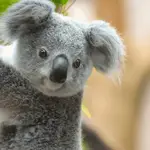Curious about the unique role of lips in the animal kingdom? From the dexterous feeding techniques of elephants to the intricate social cues of hippos, lips are more than just a human feature.
Discover how these diverse creatures use their lips for survival, communication, and environmental interaction. Dive into a world where lips do much more than speak—they’re essential to the very essence of animal life. Join us on an exploration of the fascinating functions of lips across species.
Key Takeaways:
- Elephants utilise their lips, which are integrated with their trunks, for a variety of essential tasks such as feeding, hydrating, and socialising, with different species showing adaptations to their specific environments.
- Giraffes have evolved tough and flexible lips that allow them to forage from thorny acacia trees, playing a crucial role in their feeding habits and also in their social interactions.
- Horses possess highly expressive and sensitive lips that aid in selective feeding, sensory exploration, and communication, revealing their emotions and facilitating social bonding within herds.
- Camels’ thick, leathery lips enable them to consume thorny desert plants without injury, serving as a vital adaptation for survival in harsh environments and playing a role in social communication.
- Cows use their highly flexible and sensitive lips for selective grazing, ensuring they consume nutritious parts of plants while also using their lips for grooming and communication within the herd.
List of Animals with Lips
Elephants, giraffes, horses, camels, cows, dogs, cats, monkeys, fish, birds, reptiles, amphibians, seals, bears, and hippos all have distinct lip adaptations for feeding, sensing, and social interaction.
| Animal | Role of Lips in Survival and Behavior |
| Elephants | Trunk as an extension of the upper lip; used for feeding, hydrating, socializing. African elephants have two finger-like extensions, while Asian elephants have one. |
| Giraffes | Tough, flexible lips for foraging from thorny trees and social interactions. |
| Horses | Expressive and sensitive; aid in selective feeding, sensory exploration, and herd communication. |
| Camels | Thick, leathery lips for consuming thorny desert plants and social communication. |
| Cows | Flexible and sensitive for selective grazing, grooming, and communication within the herd. |
| Dogs | Flexible and expressive; vital for showing emotions, sensory exploration, and social interaction. |
| Cats | Subtle yet significant for feeding, sensory exploration, and communication. |
| Monkeys | Prehensile lips for feeding and social interaction; reflect complex social structures. |
| Fish | Diverse adaptations for feeding, such as suction feeding in carps and protective functions in pufferfish. |
| Birds | Less prominent, aiding in feeding efficiency, sensory perception, and beak protection. |
| Reptiles | Adapted for feeding, sensory roles, and environmental interaction, from snakes to turtles. |
| Amphibians | Aid in unique feeding strategies like suction in frogs and sensory perception in newts. |
| Seals and Sea Lions | Adapted for feeding in marine environments, social interaction, and communication. |
| Bears | Versatile for omnivorous diet, sensory exploration, and social behavior. |
| Hippos | Muscular and dexterous for grazing, sensory roles, and social interaction in aquatic environments. |
1. Elephants: Majestic Creatures with Notable Lips
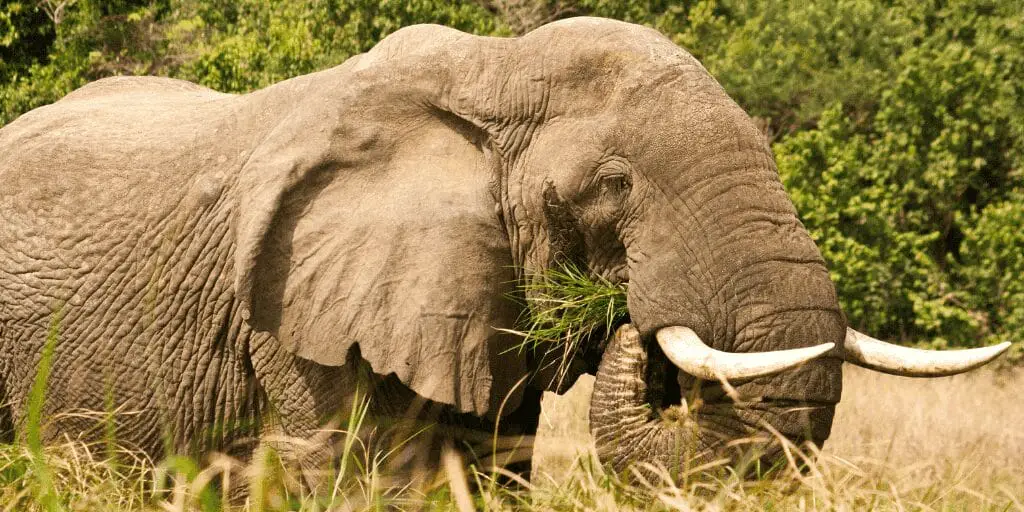
Elephants, those gentle giants that roam the Earth, are not often recognized for their lips. Yet, these features play a pivotal role in their daily lives. The lips of an elephant are intricately linked to their most iconic feature: the trunk. Acting as an extension of the upper lip and nose, the trunk is a multifunctional tool, essential for feeding, hydrating, and socializing.
The three main species of elephants—African bush, African forest, and Asian elephants—each have their own unique physical attributes, particularly when it comes to their lips and trunks.
African elephants are distinguished by their larger ears and two finger-like extensions at the trunk’s tip, which aid in their remarkable dexterity. Asian elephants, on the other hand, have smaller ears and a single finger-like extension on their trunk.
These differences are not just superficial; they reflect adaptations to their respective habitats, which range from the vast savannahs and dense forests to marshes. The elephants’ lips are crucial for their survival, assisting in feeding practices that vary based on their environment.
Moreover, the social structures of elephant herds are complex and fascinating, often led by a matriarch whose experience guides the group. Lips are not just for eating but also serve as instruments of emotion and communication within these tight-knit communities.
As we delve into the lives of these majestic creatures, it’s also vital to acknowledge their endangered status and the importance of conservation efforts to protect their habitats from human activities.
African Bush and Forest Elephants
The African bush and forest elephants, with their grand stature and impressive tusks, are a sight to behold. Their large ears flutter like flags, helping to regulate their body temperature in the hot African climate.
But it’s their lips, along with their trunks, that are truly remarkable. These features are not only prehensile, allowing them to grasp and manipulate objects, but also sensitive, enabling them to feel and explore their environment.
In the open savannahs, the African bush elephant uses its lips to strip bark from trees, while in the dense forests, the African forest elephant’s lips are more adept at plucking leaves and fruit.
These subtle differences are a testament to the adaptability of these creatures. The social dynamics within herds are equally intriguing, with lips playing a role in expressing emotions and maintaining social bonds. Unfortunately, these species face significant threats from habitat loss and poaching. Conservation efforts are in place, aiming to preserve these magnificent animals and their natural environments.
Asian Elephants
The Asian elephant, with its smaller ears and single trunk tip extension, stands apart from its African cousins. The trunk, a remarkable fusion of lip and nose, is a testament to evolution’s ingenuity.
It’s used for an array of activities, from picking up tiny objects to siphoning water for a refreshing bath. These elephants inhabit diverse landscapes across South and Southeast Asia, from lush grasslands to dense forests, and their lip and trunk adaptations are key to their survival.
Asian elephants have a different social structure, typically forming smaller family units, yet their lips and trunks are just as important for their interactions and communication.
These elephants also hold a special place in local cultures and economies, often participating in labor and ceremonial events. However, they face their own set of challenges, including habitat encroachment and human-elephant conflict. Conservation measures are crucial to ensure the future of Asian elephants, balancing the needs of human populations with the preservation of these majestic animals.
2. Giraffes: The Long-Necked Wonders of the Animal Kingdom
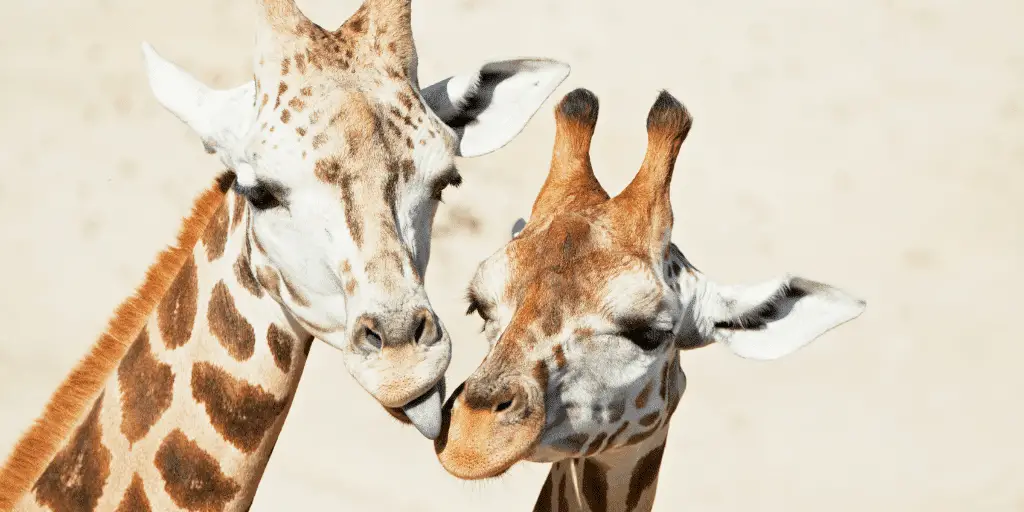
Giraffes are truly the skyscrapers of the animal kingdom, with their towering necks and captivating coat patterns that can leave anyone in awe. Among the various subspecies, such as the Masai, Reticulated, and South African giraffes, they share a common home across the vast landscapes of Africa, stretching from the Sahel of Chad to the bushveld of South Africa.
These gentle giants have adapted in remarkable ways to thrive in their environments, and one of the most fascinating adaptations can be seen in their lips. These flexible and tough lips are essential for their survival, allowing them to forage at heights that other herbivores can only dream of reaching.
As we explore their world, we’ll see how these creatures use their lips not just for feeding, but also in their intricate social structures. Despite their grandeur, giraffes face significant threats from habitat loss and poaching, and understanding their behavior and biology is crucial for effective conservation efforts.
Feeding Habits and Lip Adaptation
When it comes to dining, giraffes have a taste for the finer things in life, or rather, the higher things. Their preferred delicacies are the leaves of acacia trees, which are often laced with menacing thorns.
But fear not, for the giraffe’s lips are the perfect tools for the job. These sturdy, yet dexterous lips can deftly grasp and strip leaves, while avoiding the sharp hazards that protect them. Paired with a long, prehensile tongue, giraffes can reach and consume foliage that would be inaccessible to less equipped herbivores.
This selective feeding not only sustains the giraffes but also shapes the savannah, as their browsing habits can influence the growth patterns of trees, underscoring their role as a keystone species. Moreover, their ruminant digestive system, which starts with the careful selection of food by their lips, allows them to extract maximum nutrients from their leafy meals.
Social Behavior and Communication
Giraffes might seem like the strong, silent types, but their lips tell a different story. These animals are surprisingly social, and their lips play a pivotal role in their interactions. From tender grooming sessions between mothers and calves to the more intense mating displays, lips are involved in a variety of ways.
One of the more dramatic uses of their lips is seen in “necking” battles among males, where they swing their necks in powerful arcs to land blows with their heads, and their lips must be tough enough to withstand these encounters. The social structure of giraffes is complex, with herds often being fluid and adult males typically leading a solitary life.
Yet, even in these dynamics, the lips are instrumental in forming and maintaining bonds, whether it’s through gentle nuzzles or more assertive gestures that establish hierarchy within the group.
3. Horses: Expressive and Sensitive Equines
Horses are not just majestic creatures known for their speed and strength; they also possess remarkably expressive and sensitive lips. These features play a pivotal role in their daily lives, from the way they interact with their environment to their communication with other horses and humans. Let’s delve into the fascinating world of horse lips and discover just how vital they are to equine behavior and communication.
Feeding and Sensory Exploration
When it comes to dining, horses are quite the connoisseurs, thanks to their prehensile lips. These flexible appendages allow them to be selective eaters, carefully choosing the tastiest grass, hay, or grains.
Their lips act like nature’s own set of tongs, adept at picking up the smallest morsels or sorting through fodder to avoid anything unsavory or potentially harmful. In the wild or in natural settings, horses graze on a variety of vegetation, and their lips are essential tools for foraging, helping them to identify which plants are nutritious and which are to be avoided.
But their lips aren’t just for eating. Horses are naturally curious, and their lips serve as sensory organs that help them explore the world around them.
They can feel textures, temperatures, and shapes, which not only satisfies their curiosity but also contributes to their intelligence. Whether they’re investigating a new object in their stall or greeting a familiar human, horses use their lips to learn about their environment and the beings within it.
Communication and Emotional Expression
Horse lips are incredibly nuanced when it comes to communication and emotional expression. Even the slightest quiver or purse can be a window into a horse’s soul, revealing feelings of joy, trust, or discomfort. Observant handlers and riders can learn a lot from these movements. A relaxed, slightly open mouth might indicate a content and comfortable horse, while lip twitching or flapping could signal anxiety or agitation.
Understanding these subtle cues is crucial for anyone involved in horse care or training. It’s not just about reading their mood; it’s about ensuring their well-being. For instance, a horse that consistently purses its lips might be experiencing dental issues or discomfort from its tack. By paying attention to these signs, handlers can make timely adjustments to their care routine.
In the social sphere, horses use their lips to groom and bond with each other, reinforcing social hierarchies and relationships within the herd. These interactions are not just about cleanliness; they’re about connection. The gentle nibbling and nuzzling between horses strengthen their bonds and provide comfort and reassurance, showcasing the lips’ role in the complex social tapestry of equine life.
4. Camels: Desert Adaptations and the Role of Lips

Camels are the quintessential desert dwellers, with a suite of adaptations that make them masters of arid survival. Among these, their lips are a marvel of evolution, perfectly designed for the harsh conditions they face.
Both the Dromedary, with its single hump, and the Bactrian, with two, showcase distinct characteristics, but their lips are a common feature that stands out for its practicality and versatility. These thick, leathery lips allow camels to consume thorny desert plants without injury, a vital trait in environments where other forms of vegetation are scarce and often tough.
Feeding Habits and Lip Functionality
When it comes to dining in the desert, camels have it figured out. Their robust lips are not just for show; they serve as a critical tool for feeding on dry, thorny, or salty plants that would deter other animals.
This adaptability is key to their survival in desert life. Camels are selective grazers, using their lips to sift through and choose the most nutritious parts of plants.
These lips are adept at managing food intake, carefully avoiding the ingestion of sand, which is no small feat in their sandy habitats. Beyond their impressive lip strength, camels have a digestive system that’s a marvel in itself, designed to extract maximum nutrition from their tough diet, with their lips playing a significant role in this process.
Social Interaction and Communication
Camels are not just eating machines; their lips are also central to their social lives. These animals use their lips to express a range of emotions and intentions through various gestures, such as pursing or curling, which can convey everything from contentment to agitation.
The social dynamics within camel herds are complex, and lip movements are a key component in establishing dominance, engaging in mating rituals, and nurturing the bonds between mother and calf. For those who work closely with camels, understanding these lip behaviors is crucial, as they offer a window into the camel’s emotional state and needs.
Moreover, camels hold a special place in human societies, especially within desert communities where they serve as pack animals and are woven into the cultural fabric, with their expressive lips often being a focal point of their interactions with humans.
5. Cows: More Than Just Grazing
Cows are often pictured as the quintessential farm animal, contentedly munching away on grass. But there’s more to these creatures than meets the eye, especially when it comes to their lips.
Far from being simple appendages, cow lips are marvels of evolution, perfectly designed to support their feeding habits and social interactions. With a flexibility that rivals the most skilled contortionist, cow lips can sift through a smorgasbord of pasture offerings to select the choicest greens.
Sensitivity is another superpower of their lips, allowing them to detect and avoid plants that could be harmful. But it’s not all about food; cow lips are also key players in the social theater of the herd, engaging in grooming rituals and nuanced communication that maintain the complex social fabric of bovine life.
Understanding these lip behaviors is not just an academic exercise—it’s crucial for effective livestock management and ensuring the welfare of these gentle giants.
Grazing Techniques and Lip Adaptation
When it comes to dining, cows have turned grazing into an art form, and their lips are the brushes with which they paint their pastoral masterpieces. These animals are not indiscriminate eaters; they’re selective grazers, thanks to their highly adapted lips.
Picture a cow at work: it uses its lips to deftly tease out the tender shoots it prefers, leaving behind the less desirable parts of the plant. This isn’t just about taste—it’s a strategy. By focusing on the most nutritious parts, cows maximize their energy intake, which is essential given their ruminant digestive system’s need for a constant supply of quality forage.
Their lips are so adept that they can avoid ingesting harmful substances, a skill that’s as important for their health as it is for the management of the pastures they feed on. The way cows graze can even have environmental implications, as their selective feeding can help maintain the biodiversity of the grasslands they inhabit.
Social Interaction and Communication
Beyond their role in feeding, cow lips are also instruments of expression within the herd. These animals are not solitary creatures; they thrive in their social groups, and their lips are often at the center of this community life.
Through a series of licks, nuzzles, and nudges, cows use their lips to groom each other, reinforcing social bonds and establishing herd hierarchies. These interactions are more than just a way to keep clean—they’re a language of sorts, conveying emotions and intentions.
For those who work with cows, paying attention to these lip movements can be enlightening, offering a window into the animals’ emotional states and social needs.
This understanding is invaluable, as it can inform better handling practices, enhance animal welfare, and ultimately lead to more productive dairy and beef operations. After all, a happy cow is often a healthy and productive one, and their lips tell us more about their happiness than we might have ever imagined.
6. Dogs: A Range of Expressions
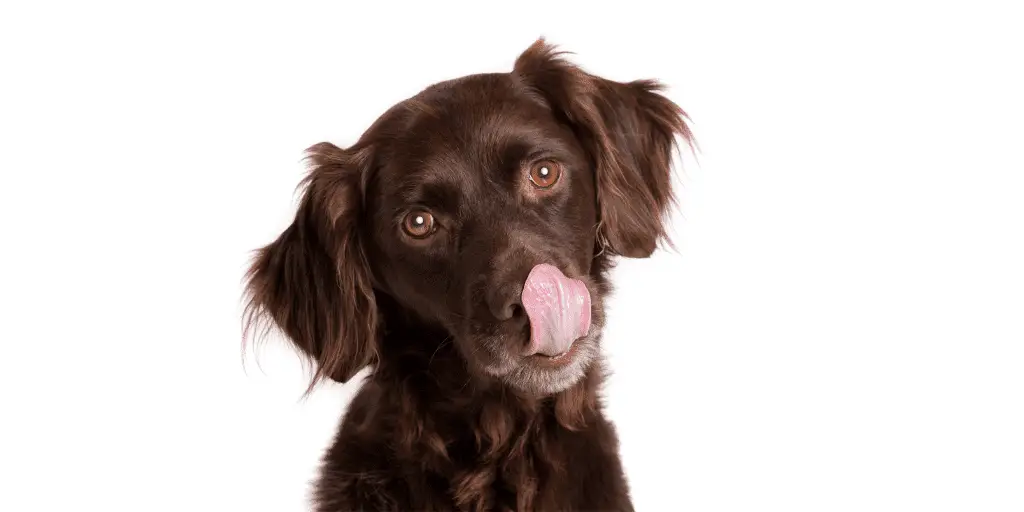
Dogs are not just man’s best friend; they’re also incredibly expressive creatures, thanks in large part to their lips. Unlike many other animals, dogs have remarkably flexible lips that play a crucial role in their behavior and communication.
These furry companions have evolved to use their lips in a variety of ways, from showing their emotions to exploring the world around them. Let’s dive into the anatomy of dog lips and discover the vast range of expressions they can convey, as well as how these features enhance the sensory experience of our canine friends and strengthen the bond between dogs and humans.
Expressive Communication and Emotion
Have you ever noticed a dog’s lips quiver with excitement or pull back in a snarl? That’s the power of their expressive communication at work. Dogs have a fascinating array of lip movements that can tell us a lot about how they’re feeling. A relaxed dog might have loose, calm lips, while a nervous one might lick its lips or pull them back slightly.
On the other hand, an aggressive dog may curl its lips up to bare its teeth. These signals are vital for anyone who interacts with dogs to understand, as they provide immediate insight into a dog’s emotional state.
Recognizing these expressions is especially important for dog owners, trainers, and veterinarians, as it helps them respond appropriately to a dog’s needs and emotions. Moreover, dogs use their lips to produce a variety of sounds, from barks to whimpers, which are essential for communication with both humans and other dogs.
Sensory Exploration and Interaction
Dogs experience the world through their senses, and their lips are a key part of that sensory exploration. With their lips, dogs can investigate everything from the texture of a new chew toy to the shape of a potential food source.
This tactile exploration is a testament to their curiosity and intelligence. When dogs play, their lips are often at the forefront, whether they’re gently mouthing during play with a human or engaging in a mock battle with a fellow pup.
Lips are also instrumental in a dog’s social life; they can signal submission or dominance in interactions with other dogs, helping to establish social hierarchies. Understanding the multifaceted role of lips in a dog’s life can greatly enhance the way we interact with and care for these beloved animals.
7. Cats: Subtle but Significant
Cats are fascinating creatures, and their lips are no exception. While they may not be as prominent as those of some other animals, the lips of a cat play a crucial role in their daily lives. From feeding to communication, these subtle features are significant for a cat’s survival and interaction with their environment. Let’s explore the anatomy of cat lips and their multifunctional uses, which are often overlooked but are vital for feline behavior.
Feeding and Sensory Exploration
When it comes to feeding, cats are quite particular. As obligate carnivores, they rely heavily on their lips and teeth to capture and consume their prey. Their lips allow them to manipulate their catch delicately, and they can assess the texture and temperature of their food before they decide to eat it. This selective feeding behavior is especially important as it helps them avoid ingesting harmful substances.
In the wild or for feral cats, lips are essential tools for foraging. They can sort through potential food sources with precision, using their lips to feel around and push aside unwanted items. But it’s not just about food; cats are naturally curious and use their lips to explore the world around them. Whether it’s investigating a new toy or greeting a human, their lips are part of how they gather information from their environment, contributing to their renowned intelligence and curiosity.
Communication and Emotional Expression
Cats communicate volumes with the smallest of gestures, and their lips are a key part of this. A slight parting of the lips or a quick twitch can convey anything from relaxation to annoyance. For cat owners and caretakers, paying attention to these subtle movements is essential. It’s a window into understanding a cat’s emotional state and ensuring their well-being.
Lip movements are not just about expressing emotions; they also play a significant role in social interactions between cats. Grooming, for instance, is a bonding behavior where lips are used to clean and care for one another, helping to strengthen social bonds.
In a group, these interactions can help establish and maintain hierarchies, with lip behaviors contributing to the complex social dynamics of feline communities. Understanding these subtle cues can greatly enhance the human-cat relationship and is invaluable for providing proper care.
8. Monkeys: The Articulate Foragers
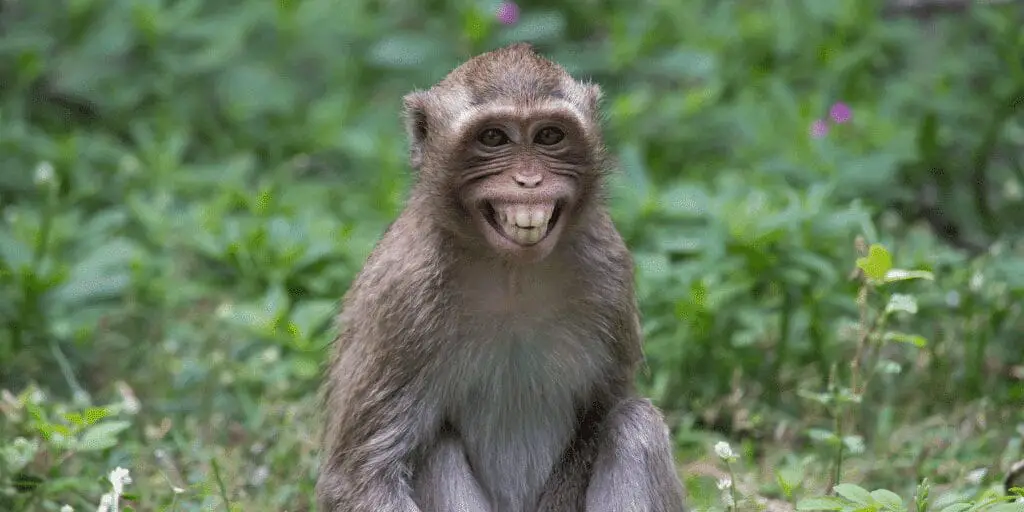
Monkeys are quite the characters of the animal kingdom, with their social antics and expressive faces often captivating our attention. But have you ever noticed their lips? Those seemingly simple features are actually key players in the daily life of a monkey. From the way they eat to how they communicate and bond with each other, monkey lips are fascinating to observe and study.
Feeding Habits and Lip Functionality
When it comes to mealtime in the treetops or the jungle floor, monkeys are masters of manipulation, and their lips are their secret tool. These prehensile wonders allow them to grasp and handle food with a finesse that’s quite remarkable.
Whether it’s plucking a juicy berry or snagging a wriggly insect, their lips work in tandem with their hands to select and secure a diverse menu. This dexterity is crucial for their survival, as it enables them to forage and consume a wide array of foods with precision.
But it’s not just about getting the food to their mouths; monkey lips are also about safety and efficiency. They can wrap their lips around a piece of fruit, carefully peeling it or removing unwanted parts before consumption, which helps prevent any potential injury from thorns or rough textures. This careful handling of food also plays a role in their social structure, as feeding behaviors can influence their interactions with one another and their environment.
Social Interaction and Communication
Now, let’s talk about the social lives of monkeys. Their lips are more than just food-handling tools; they’re instruments of expression. A monkey might purse its lips to show displeasure or curl them during play to signal enjoyment. These subtle cues are the building blocks of monkey society, helping to establish hierarchies and strengthen bonds within the group.
For those studying primates, recognizing and interpreting these lip movements is crucial. It’s like learning a new language, one that reveals the emotional state and social needs of these intelligent creatures. Understanding these behaviors is not only fascinating but also essential for improving their care and conservation.
Monkeys have also captured a special place in human culture and research. By observing their lip behaviors, we gain insights into our own social and communicative evolution. After all, monkeys are our close relatives, and their articulate foraging and complex social interactions remind us of the intricate web of life that connects us all.
9. Fish: Underwater Lip Functions
Fish are truly remarkable when it comes to the variety of their lip functions. In the vast underwater world, these creatures have developed some of the most intriguing adaptations to thrive. From the murky river bottoms to the vibrant coral reefs, fish lips serve as critical tools for survival. Let’s dive into the ways these aquatic animals use their lips to feed, protect themselves, and even communicate.
Feeding Adaptations and Lip Diversity
When it comes to dinner time in the aquatic world, fish lips are the unsung heroes. Take the carp, for instance, with their protruding lips that act like a vacuum cleaner, they can sift through silt and mud to find tasty morsels hidden below. These lips are not just for show; they’re a masterclass in evolutionary design, allowing carps to thrive in their bottom-feeding lifestyle.
Then there are the cichlids, sporting thick, fleshy lips that are perfect for scraping algae off rocks. It’s like having a built-in kitchen tool, tailored to their vegetarian diet. But the diversity doesn’t stop there. Catfish have turned the art of suction feeding into a science. Their lips form an airtight seal against surfaces, making them the underwater equivalent of a powerful vacuum, sucking up food with impressive efficiency.
And let’s not forget the gentle giants of the sea, the whale sharks. Their lips are part of a sophisticated filtering system, sorting through tons of water to feast on plankton and small fish. It’s a big job, but their lips are more than up to the task, proving that in the fish world, lips are about much more than just looks.
Sensory and Protective Functions
Fish lips are not just for eating; they’re also highly tuned sensory devices. Imagine being able to taste and feel your way through the water, detecting the slightest changes in your environment. That’s a day in the life of a fish. Their lips help them locate food, avoid predators, and navigate the complex landscapes of their watery homes.
Protection is another key role of fish lips. Consider the pufferfish, which inflates its body as a defense mechanism. Its lips seal off the mouth to ensure that while it’s puffing up to intimidate predators, it doesn’t end up hurting itself. It’s a delicate balance, and the lips are the gatekeepers, ensuring the pufferfish’s safety.
Social interactions are yet another arena where fish lips play a vital part. In some species, the size and color of a fish’s lips can be a dazzling display designed to attract mates or ward off rivals. It’s a silent language spoken through the subtle cues of lip structure and hue, proving that in the fish world, lips can be as much about communication as they are about survival.
10. Birds: Beaks and Beyond
Birds are often recognized by their distinctive beaks, but what about their lips? It’s a feature that doesn’t usually come to mind when we think of our feathered friends.
However, the presence of lips in birds, although not as prominent as in mammals, plays a crucial role in their daily activities. From feeding to sensory perception, and even in protecting their beaks, bird lips have a part to play. Let’s delve into the fascinating world of avian lips and discover how they contribute to the lives of birds in ways that might not be immediately obvious.
Feeding Efficiency and Lip Function
When it comes to dining, birds have a variety of methods to get their meals. But have you ever noticed the subtle way their lips work in tandem with their beaks? For instance, filter-feeding birds like flamingos have more pronounced lip structures that are essential for their unique feeding style.
These lips help them to effectively sift through water, trapping nutritious algae and tiny organisms for consumption. In other birds, lips are key in guiding food into the mouth, manipulating it for easier swallowing, and even protecting the beak during foraging activities. It’s a delicate dance between beak and lip that ensures these creatures get the nourishment they need without damaging their primary tool for survival.
Sensory Perception and Vocalization
Bird lips might not be the first thing you think of when considering their sensory capabilities, but they do play a role in how birds interact with the world. During foraging, the lips can provide tactile feedback, helping birds to discern the nature of the items they come across. This sensory input is vital for survival, especially in species that forage in murky waters or dense foliage where visibility is limited.
Moreover, when it comes to communication, some birds use their lips in surprising ways. While not as flexible as mammalian lips, the movements of avian lips can aid in the modulation of sounds and calls.
This is particularly true for species that have a more complex vocal range. Understanding these movements can be a fascinating area of study for ornithologists and bird enthusiasts alike, offering deeper insights into the communicative behaviors of these winged wonders.
11. Reptiles: A Different Perspective
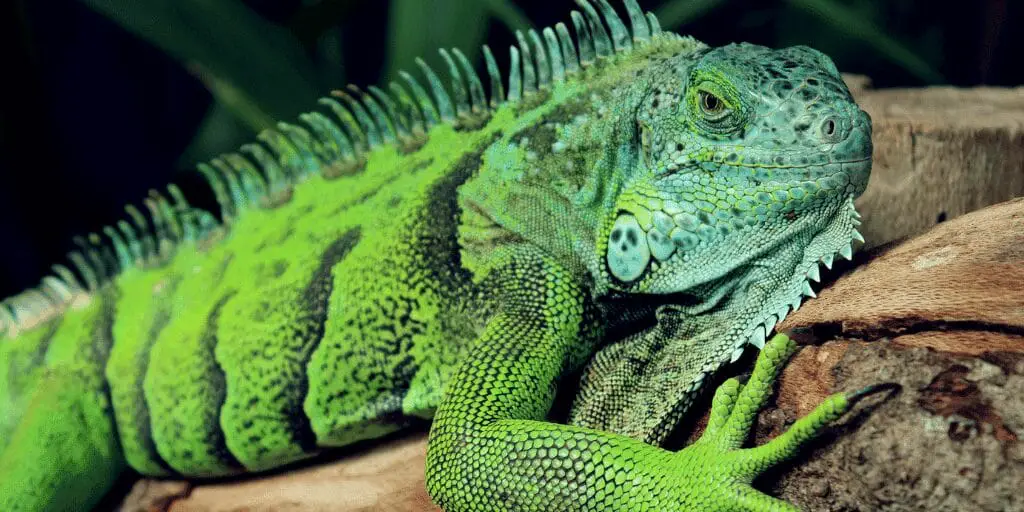
Reptiles, with their scaly skin and often stoic demeanor, might not be the first creatures that come to mind when you think of animals with lips. Yet, these cold-blooded critters from the serpentine snakes to the shelled turtles, all have their unique versions of lips that serve crucial roles in their survival.
Unlike the fleshy, expressive lips of mammals, reptilian lips are more subtle, but they’re no less important. They’ve adapted over millennia to help these animals feed, sense their environment, and protect their mouths from harm.
Feeding Adaptations and Lip Functionality
When it comes to mealtime, reptiles have some fascinating adaptations that involve their lips. Take snakes, for example; they don’t chew their food but rather swallow it whole.
Their lips, along with their flexible jaws, allow them to stretch around large prey. Lizards, on the other hand, have lips that help them manipulate insects or vegetation before consumption. In the case of turtles, their lips form a tight seal that enables them to create suction, an essential technique for pulling in water and capturing prey.
But it’s not just about getting the food into the mouth; lips also protect. Imagine a crocodile crunching down on a tough-shelled creature. Its lips act as a barrier, guarding the sensitive inner mouth parts against sharp edges and debris. For reptiles that dine on hard or abrasive materials, this protection is vital, preventing injuries that could lead to infection or impede their ability to feed.
Sensory Roles and Environmental Interaction
Reptile lips are more than just food funnels; they’re also sensory hotspots. Many reptiles rely on their lips to feel their way through the world. They can detect changes in temperature, sense vibrations, and even pick up chemical cues from the environment, all of which are essential for locating prey or avoiding predators.
In species like the monitor lizard, the lips are packed with nerve endings, making them incredibly sensitive to touch. This tactile ability is particularly important for animals that hunt in the dark or murky waters, where visibility is low. And it’s not just about survival. Lips play a part in social interactions too. Some reptiles use their lips during mating displays, gently nuzzling their partners, or in territorial disputes, where a lip curl can signal aggression.
Reptilian lips might not be the stuff of romantic poems, but they’re a testament to the incredible adaptability and diversity of these ancient creatures. Whether it’s a snake silently sensing its prey or a turtle deftly catching a fish, their lips are key to their mastery of the environments they inhabit.
12. Amphibians: Unique Lip Adaptations
Amphibians, a fascinating group that includes creatures like frogs, toads, salamanders, and newts, have a unique set of features that set them apart in the animal kingdom.
Among these features are their lips, which might not be as prominent as those of mammals, but they serve crucial functions in the lives of these semi-aquatic and terrestrial beings. The lips of amphibians are integral to their survival, aiding in feeding habits and environmental interactions. Let’s dive into the ways these creatures utilize their subtle yet significant lip adaptations.
Feeding Strategies and Lip Usage
When it comes to mealtime in the amphibian world, lips are more than just a frontispiece; they are dynamic tools that facilitate survival. Take frogs, for instance, with their remarkable suction feeding technique. Their lips form a seal around their prey, creating a vacuum that sucks the unsuspecting victim into their mouths. This method is particularly useful for their aquatic hunting escapades, where precision and speed are key.
Salamanders, on the other hand, showcase a different use for their lips. These amphibians often employ their lips to manipulate and grasp food items, allowing them to consume a variety of prey from insects to small fish. The diversity in the amphibian diet is mirrored in the adaptability of their lip structures, each species fine-tuning its lip use to meet specific dietary requirements. Whether it’s scooping, grasping, or sealing, amphibian lips are evolutionarily crafted to support their feeding strategies.
Sensory Perception and Environmental Interaction
Beyond their role in feeding, amphibian lips are sensory powerhouses. These animals rely heavily on their tactile abilities to perceive the world around them. Their lips are often laden with nerves that can detect even the slightest changes in their environment, from the movement of potential prey to the approach of a predator.
In the murky waters and damp forests they call home, visibility can be limited, making touch an essential sense. Amphibians like newts might use their lips to gently probe the substrate and vegetation, searching for food or navigating their habitat. This tactile exploration is vital for species that are nocturnal or live in particularly dense environments where eyesight is less reliable.
The lips of amphibians are not just for personal use; they also play a role in social interactions. During mating seasons, for example, some species might use their lips in courtship displays or to establish dominance. In the complex tapestry of amphibian life, lips are multifunctional features that contribute to feeding, sensory perception, and interaction with both the environment and other amphibians.
13. Seals and Sea Lions: Marine Mammal Marvels
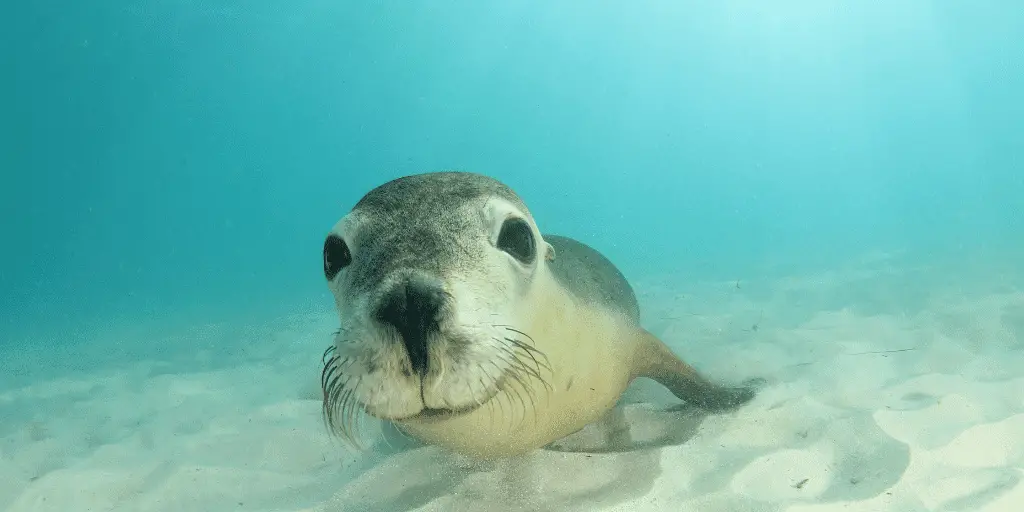
Seals and sea lions, or pinnipeds, are the charming acrobats of the sea, equipped with fin-like limbs that make them adept swimmers. But have you ever noticed their lips?
These aren’t just any ordinary lips; they’re highly specialized tools that play a crucial role in these animals’ survival. From the whiskered grin of a New Zealand fur seal to the impressive jowls of a southern elephant seal, each species has its own unique lip adaptations. Let’s dive into the fascinating world of pinniped lips and discover how they’re used for feeding, sensing the environment, and even socializing in the depths of the ocean.
Feeding Habits and Lip Adaptation
When it comes to mealtime in the ocean, seals and sea lions have their feeding strategies down pat, and their lips are at the forefront of this aquatic ballet. Take the walrus, for instance, with its remarkable ability to use its lips and tusks to vacuum up mollusks from the seabed.
These lips are not just for show; they’re muscular, agile, and incredibly sensitive, allowing for a fine-tuned approach to capturing slippery prey like fish and squid. The lips of these marine mammals are also designed to protect their mouthparts from the abrasive ocean floor and the spines of their prey, all while contributing to their sleek, hydrodynamic form that enables them to glide through the water with ease.
Social Interaction and Communication
Beyond their feeding prowess, the lips of seals and sea lions are key players in their social lives. These creatures are quite the socialites, and their lips help them express a wide range of emotions and intentions.
A curled lip might signal aggression during the breeding season, while a softer, relaxed lip could be a sign of contentment. In the bustling colonies where these animals gather, lip movements are part of a complex language that includes vocalizations and body postures. This lip language is especially poignant between mothers and pups, helping to strengthen their bond.
For marine biologists and conservationists, observing these subtle lip cues is like unlocking a secret code to the animals’ social structure and health, providing invaluable insights into the lives of these fascinating marine mammals.
14. Bears: The Omnivorous Mammals
Bears are fascinating creatures, not least because of their versatile lips, which play a crucial role in their omnivorous feeding habits. With a diet that ranges from the smallest berries to the largest mammals, bears have developed lips that are both sensitive and strong, allowing them to engage in a variety of feeding behaviors.
Different species, such as the grizzly bear, polar bear, and black bear, showcase unique adaptations in their lip structure to suit their specific dietary preferences and habitats.
Diet and Lip Functionality
When it comes to mealtime, bears are quite the connoisseurs, and their lips are their most trusted utensils. Grizzly bears, for instance, use their muscular lips to skillfully pluck berries and nuts, which are staple foods in their diet. These lips are dexterous enough to select individual food items, yet robust enough to tear open logs when searching for insects or to catch slippery salmon during a river run.
Polar bears, on the other hand, have a more carnivorous diet, relying heavily on their sense of touch through their lips to detect seals beneath the ice. Their lips help them to carefully manage their intake, ensuring they consume enough fat to survive the harsh Arctic conditions. Black bears, often found scavenging, use their lips to gently sift through potential food sources, avoiding any harmful substances.
The functionality of bear lips extends beyond mere food selection; it’s about survival. Their lips act as a barrier, preventing injuries from thorns or bones, which is essential when foraging in the wild.
Sensory Exploration and Social Behavior
Bear lips are not just for eating; they’re a key part of their sensory exploration toolkit. Bears rely on their lips to feel their way around their environment, to detect the texture and temperature of food, and to understand the world around them. This tactile feedback is especially important for species like the polar bear, which often hunts in visually challenging conditions.
But the role of bear lips goes even further, playing a part in their social interactions. During mating rituals, bears will often gently bite or nuzzle each other’s lips, a sign of affection and a way to communicate readiness. Mother bears use their lips to guide and protect their cubs, teaching them how to forage and navigate their surroundings.
Territorial displays among bears also involve the lips, with bears curling their lips or baring their teeth as a warning to potential intruders. This subtle yet powerful use of lips in communication underscores their importance in bear society, beyond the basic need for sustenance.
15. Hippos: The Aquatic Grazers
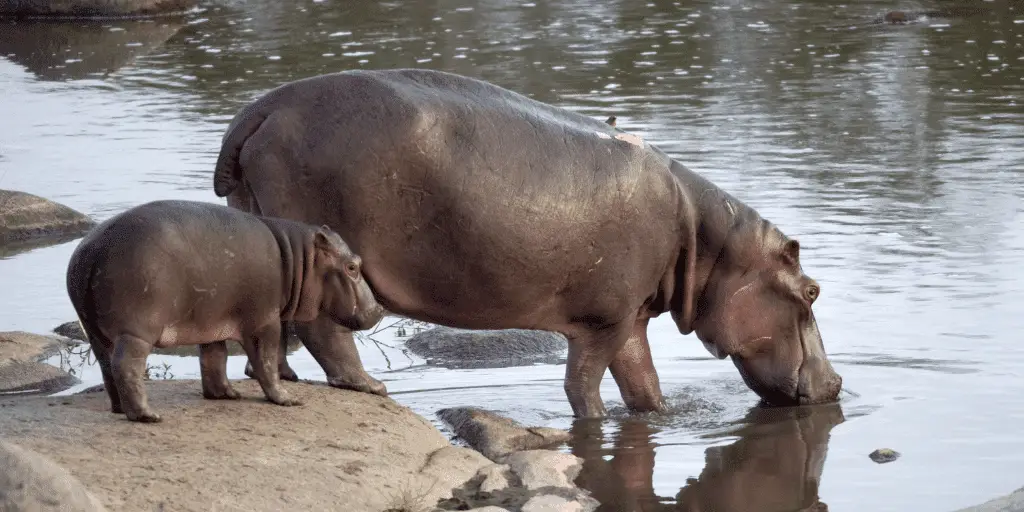
Hippos, with their barrel-shaped bodies and enormous mouths, are often the subject of awe and curiosity. But it’s their lips that deserve a special mention. These large, flexible structures are not just for show; they play a pivotal role in the hippopotamus’s survival strategy. The anatomy of hippo lips is fascinating, as they are thick, muscular, and highly adapted to the animal’s feeding habits. Let’s dive into the world of these aquatic grazers and discover the wonders of their lips.
Feeding Techniques and Lip Adaptation
When it comes to dining, hippos are quite the connoisseurs of grass. These herbivorous giants use their hefty, muscular lips to snatch up their favorite meals. Unlike other animals that might nibble delicately at their food, hippos take a more robust approach. Their lips act like large tongs, grasping and pulling grasses with surprising dexterity. Once the grass is in their mouths, their molars get to work, grinding the vegetation into a digestible state.
Hippos typically embark on their gastronomic adventures at night, leaving the safety of the water to graze on land. Their lips are not only built for feeding but also for protection. They can manipulate their food intake without getting injured by sharp sticks or thorns that might be hidden in the grass. The impact of their grazing is not trivial; it can shape the landscape, creating pathways and clearings that benefit other species and the ecosystem at large.
Sensory Roles and Social Interaction
But the hippo’s lips are more than just feeding machines; they are also sensory powerhouses. In the murky waters where hippos spend much of their time, visibility is low, and their tactile lips become essential for exploring their environment. They can feel their way around, locating food and navigating obstacles with ease.
These sensitive lips also play a crucial role in social interactions. Hippos are known for their complex social structures, and their lips are involved in everything from gentle mother-calf bonding to the fierce gaping displays of territorial males. During mating rituals, for instance, a hippo’s lips might gently caress a potential partner, conveying interest and readiness.
In the water, where much of their communication takes place, their lips help them maintain relationships and establish social hierarchies within the group. Understanding these behaviors is crucial for wildlife management and conservation efforts, ensuring that these magnificent creatures continue to thrive in their natural habitats.
Conclusion
In conclusion, the animal kingdom showcases a remarkable diversity of lip adaptations, each tailored to the specific needs of the species. From the dexterous and sensitive lips of elephants and giraffes to the robust, protective lips of camels and hippos, these features play a critical role in feeding, sensory exploration, and social interaction.
Moles, blind snakes, and cavefish demonstrate how reduced or absent vision has led to enhanced other senses, with their small or vestigial eyes complemented by other adaptations.
Tarsiers and naked mole rats, despite their small eyes, have evolved to thrive in nocturnal and subterranean environments, respectively. Deep-sea fish, with their small yet specialized eyes, exemplify the incredible adaptability of life in the ocean’s darkest depths.
Across mammals, reptiles, amphibians, and even birds, lips serve as vital tools for survival, communication, and environmental interaction. This exploration of animals with lips reveals the intricate ways in which evolution has shaped the form and function of these features, emphasizing the importance of understanding and conserving the diverse life forms that share our planet.



